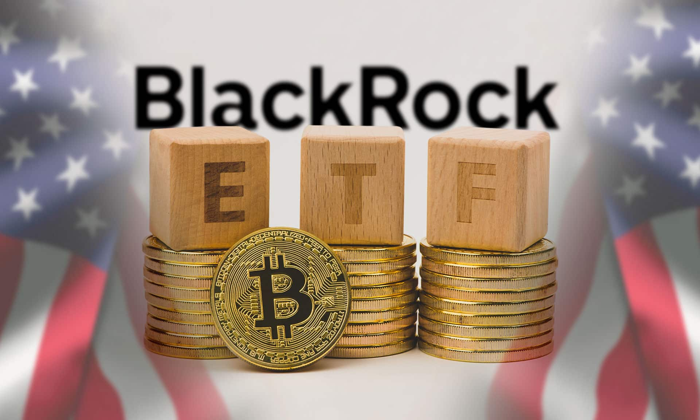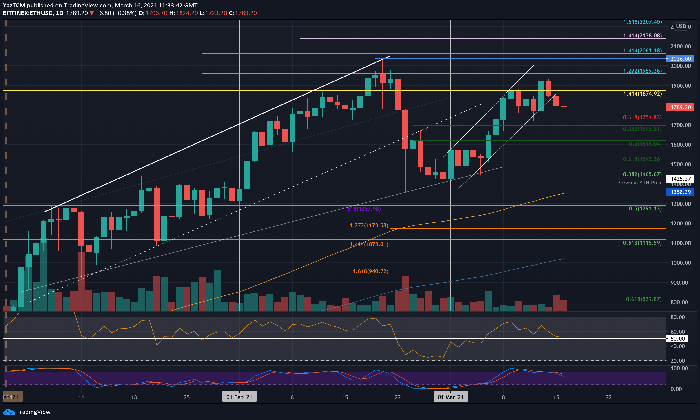Hyperbitcoinization is a fascinating prospect within the evolving landscape of cryptocurrency, where Bitcoin is poised to become the world’s primary currency, displacing traditional fiat money. As major Bitcoin treasury firms like Strategy make significant investments, the Bitcoin market cap might soar beyond $200 trillion, a shift that could fundamentally alter our financial systems. The momentum from institutions embracing Bitcoin as a legitimate asset signals a substantial rise in Bitcoin global adoption, reshaping investment strategies across various sectors. With inflation eroding the value of fiat currencies, Bitcoin’s anti-inflationary nature becomes increasingly appealing to both investors and governments alike. This scenario sparks discussions on crypto investment strategies that are more sustainable and profitable, driving the future of our economic paradigm towards this revolutionary digital currency.
The concept of hyperbitcoinization encapsulates the potential for Bitcoin to emerge as the leading currency globally, effectively replacing traditional money due to its inherent advantages in a world increasingly skeptical of conventional financial mechanisms. With the advent of Bitcoin treasury firms and their strategic investments, there is a clear push towards broader acceptance and utilization of Bitcoin, paving the way for what could be dubbed an economic metamorphosis. This phenomenon is not only about the massive market capitalization projected for Bitcoin but also involves comprehensive changes in how businesses and governments view and interact with digital currencies. As the discourse around crypto continues to expand, particularly concerning Bitcoin’s role in counteracting price inflation, investors are re-evaluating their approaches, highlighting the importance of adaptive financial strategies. Thus, the discussion around the rise of Bitcoin encapsulates a transformative shift that could redefine currency and investment landscapes as we know them.
The Rise of Bitcoin Treasury Firms
In recent years, Bitcoin treasury firms such as Strategy and others have emerged as key players in the crypto landscape, positioning themselves as pioneers in the financial revolution that stands at the brink of Hyperbitcoinization. These firms are strategically investing in Bitcoin to capitalize on its potential market expansion, aiming to lead global efforts for Bitcoin adoption. The substantial market cap of Bitcoin is projected to soar to over $200 trillion, suggesting that these companies may have initiated a paradigm shift in corporate treasury management, prioritizing Bitcoin as a core asset to hedge against inflation.
As the pace of global Bitcoin adoption accelerates, these treasury firms are influencing traditional financial strategies. Their investments serve as both a vote of confidence in Bitcoin’s resilience and a signal to other corporations about the viability of shifting to a Bitcoin-centric treasury approach. This move is not only creating opportunities for significantly higher returns, but it also places these firms at the forefront of a monumental transformation in how mainstream businesses view and incorporate digital currencies into their operations.
Impact of Bitcoin’s Market Cap Predictions
The optimistic projections regarding Bitcoin’s market cap reaching $200 trillion within a decade are reshaping how investors and firms interpret potential future gains. This expectation is underpinned by the increasing acknowledgment of Bitcoin as a sound alternative to fiat currencies, particularly as global inflation trends elevate skepticism about traditional financial systems. Such lofty market cap aspirations are being fueled by institutional investments, including strategies employed by Bitcoin treasury firms, that attract mainstream attention toward establishing a digital currency treasury.
Consequently, the focus on Bitcoin’s rising market cap is drawing the attention of governments and large corporations alike, many of which are beginning to explore ways to integrate Bitcoin into their portfolios. As Adam Back elucidates, the mechanism of leveraging Bitcoin as a treasury asset represents a sustainable arbitrage opportunity between the rapidly evolving crypto landscape and the conventional financial model. Investors are capitalizing on this dynamic to fortify their crypto investment strategies, which have the potential to yield robust returns amidst the backdrop of price inflation.
Understanding Hyperbitcoinization
Hyperbitcoinization is a transformative concept that postulates a future where Bitcoin emerges as the predominant global currency, ultimately replacing fiat currencies. This shift is driven by Bitcoin’s inherent anti-inflationary properties and a growing distrust towards conventional financial instruments. As more entities recognize Bitcoin’s capabilities, its adoption expands, creating a virtuous cycle that further encourages investment and integration into everyday transactions.
The conditions for Hyperbitcoinization hinge upon Bitcoin’s ability to reliably outpace inflation rates defined by traditional currencies. As highlighted by Adam Back, the increasing price of Bitcoin over multi-year periods serves as a fundamental catalyst for this phenomenon. Other factors, such as large treasury firms embracing Bitcoin and regulatory shifts favoring digital asset integration, play vital roles in signaling to the broader market that Bitcoin is not just an asset for speculation, but a serious contender for currency status.
Strategies for Crypto Investment
Developing a comprehensive crypto investment strategy is pivotal for anyone navigating the burgeoning Bitcoin market. Institutional investors and firms with Bitcoin treasuries are adopting various investment strategies, capitalizing on Bitcoin’s volatile nature to maximize returns. These strategies involve not just holding Bitcoin, but also balancing portfolios with other cryptocurrencies and utilizing derivatives to hedge against potential market downturns. The successful adoption of these strategies can greatly influence a firm’s overall financial health, particularly as Bitcoin’s market cap continues to expand.
In this rapidly changing investment environment, firms must also embrace continuous learning and adaptation to market trends. This includes understanding Bitcoin price dynamics, remaining informed about regulatory changes, and assessing the broader cryptocurrency landscape. By implementing thoughtful crypto investment strategies, institutions can develop resilient portfolios that leverage Bitcoin’s unique position, as well as its potential for significant appreciation in value over time.
Institutional Confidence in Bitcoin
As institutional adoption of Bitcoin grows, confidence in the cryptocurrency is amplified by several factors, including recent regulatory changes that support its integration into traditional finance. The withdrawal of guidance from the U.S. Federal Reserve discouraging banks from engaging with cryptocurrencies is a significant development, inspiring financial institutions to explore Bitcoin as a viable asset class. Industry leaders like Michael Saylor have underscored the importance of this shift, emphasizing that banks are now in a position to embrace Bitcoin, supported by a regulatory framework that aims to facilitate the integration of digital assets.
Firms that hold substantial amounts of Bitcoin, such as Strategy, are not only reshaping their financial practices but are also serving as influential examples for other companies contemplating similar investments. These early adopters are signaling that Bitcoin can be a profitable and strategic component of corporate treasuries, helping to alleviate uncertainty among hesitant investors. The ongoing shift towards Bitcoin treasuries represents a broader trend that may ultimately revolutionize the financial landscape, signaling a more open and accepting approach to cryptocurrency in global finance.
The Role of Governments in Bitcoin’s Future
Government actions profoundly influence global Bitcoin adoption, as evidenced by the recent decision to establish a national Bitcoin reserve from forfeited assets in the U.S. This move mirrors a growing trend among governments to evaluate how they can appropriately engage with cryptocurrencies. As Bitcoin steadily gains traction, legislative frameworks are being developed to promote safe and beneficial interaction with digital assets while protecting consumers and investors alike.
These government initiatives can bolster public confidence in Bitcoin and enhance its legitimacy as an alternative currency. However, the balance remains delicate, and how laws evolve will be crucial in determining the trajectory of Bitcoin’s growth. By setting clear guidelines, governments not only aid in fostering a stable market environment but also encourage traditional financial institutions to adopt Bitcoin, thereby driving the potential for a more profound economic transformation tied to Hyperbitcoinization.
Challenges to Bitcoin’s Global Adoption
Despite the promising predictions for Bitcoin’s future, challenges remain that could impede its path to global adoption. Skepticism surrounding the volatility of Bitcoin prices and regulatory hurdles are primary concerns for potential investors and institutions. These challenges need to be addressed comprehensively to create a more stable environment that encourages broader participation in the Bitcoin ecosystem.
Moreover, as Bitcoin’s price experiences fluctuations, a growing number of businesses need to be educated about the utility of Bitcoin as a transaction medium rather than viewing it solely as an investment vehicle. Overcoming these hurdles requires proactive measures from industry advocates, educational initiatives, and collaboration with regulatory bodies to foster acceptance and understanding of Bitcoin on a global scale.
The Future of Bitcoin Price Trends
Bitcoin’s price trajectory remains one of the most scrutinized aspects of its evolution, especially when contextualized within discussions of Hyperbitcoinization. As Adam Back explains, Bitcoin’s ability to appreciate at rates exceeding traditional inflation rates is crucial for establishing its position as a reliable alternative to fiat currencies. Investors closely watch Bitcoin’s price movements, understanding that sustained upward trends are indicative of the currency’s weakening relationship with inflation.
The historical patterns of Bitcoin price increases suggest that, as more firms recognize its potential, the likelihood of adoption and price stability grows. Consequently, any shifts in Bitcoin’s price directly influence market confidence and adoption rates. Ongoing analysis of these trends is essential for investors aiming to navigate the volatile landscape of cryptocurrencies successfully and position themselves advantageously as Hyperbitcoinization unfolds.
Innovation in Bitcoin Financial Products
With Bitcoin gaining in prominence, there has been an uptick in the development of innovative financial products that incorporate the cryptocurrency into traditional financial ecosystems. Bitcoin treasury firms are leading the charge in this innovation, creating sophisticated financial instruments that allow for a diverse range of investment strategies and risk management options. This trend not only fortifies Bitcoin’s market standing but also introduces new avenues for institutional investment.
As the integration of Bitcoin into traditional finance matures, we can expect to see the emergence of products that address specific investment needs such as Bitcoin futures, ETFs, and other derivative instruments. These offerings will enable a broader array of market participants to access Bitcoin and could expedite its journey towards mainstream acceptance and adoption, further embedding Bitcoin into the global financial framework.
Frequently Asked Questions
What is Hyperbitcoinization and how does it affect Bitcoin’s market cap?
Hyperbitcoinization refers to a future scenario wherein Bitcoin becomes the dominant global currency, overshadowing fiat currency due to its deflationary characteristics. This shift could potentially lead to Bitcoin’s market cap exceeding $200 trillion, driven by increasing global adoption and institutional investment.
How are Bitcoin treasury firms contributing to Hyperbitcoinization?
Bitcoin treasury firms are pivotal in driving Hyperbitcoinization by strategically accumulating Bitcoin as a store of value. Companies like Strategy, which holds significant Bitcoin assets, are demonstrating that Bitcoin-centric treasuries can result in substantial profits and encourage widespread adoption among institutions.
What role does Bitcoin price inflation play in Hyperbitcoinization?
The dynamics of Bitcoin price inflation are crucial for Hyperbitcoinization as rising Bitcoin values are expected to outpace traditional fiat inflation. This discrepancy may accelerate global acceptance of Bitcoin, positioning it as a reliable currency alternative amid increasing skepticism of the fiat system.
What are some key crypto investment strategies to consider in the context of Hyperbitcoinization?
Investors might consider Bitcoin-centric strategies such as building Bitcoin treasuries, leveraging long-term holdings against fiat currency inflation, and diversifying into Bitcoin-related assets. These strategies align with the concept of Hyperbitcoinization by promoting the secure value of Bitcoin in an evolving financial landscape.
What predictions are being made about Bitcoin global adoption related to Hyperbitcoinization?
Predictions suggest that global Bitcoin adoption will soar as institutional players recognize its value, potentially driving Bitcoin’s market cap to an estimated $200 trillion. Notable figures like Adam Back emphasize that ongoing investments from significant firms will catalyze this widespread acceptance of Bitcoin as a currency.
| Key Point | Explanation |
|---|---|
| Hyperbitcoinization | The theoretical future where Bitcoin becomes the primary global currency, replacing fiat. |
| Investment firms leading the change | Investment firms with Bitcoin-centric treasuries are promoting Bitcoin adoption and driving its market cap towards $200 trillion. |
| Role of Adam Back | Adam Back emphasizes that treasury strategies represent a logical arbitrage opportunity due to the disconnect between Bitcoin’s potential and the current fiat world. |
| Price Catalyst for Hyperbitcoinization | Bitcoin price outpacing inflation is seen as the key driver for hyperbitcoinization, according to Adam Back. |
| Regulatory Environment | With the U.S. Federal Reserve easing restrictions on banks regarding cryptocurrencies, broader adoption is more likely. |
| Global Interest | Firms like Metaplanet in Asia are also leveraging Bitcoin treasury strategies, showing a growing interest globally. |
Summary
Hyperbitcoinization is emerging as a powerful concept in the realm of cryptocurrency, suggesting a future where Bitcoin dominates as a global currency, effectively replacing traditional fiat currencies. As major investment firms begin to adopt Bitcoin-centric treasury strategies, they are not only reinforcing Bitcoin’s position but also setting the stage for a potential market cap surge to $200 trillion within the next decade. The increasing acknowledgment of Bitcoin’s unique attributes by institutions and governments further solidifies the prospect of hyperbitcoinization, highlighted by the ongoing discussions and investments in the crypto space. This shift signals a growing skepticism towards conventional financial systems and marks a significant transformation in how society perceives value and currency.
Hyperbitcoinization is a concept that captures the potential future where Bitcoin emerges as the reigning global currency, displacing traditional fiat currencies entirely. This shift could catapult Bitcoin’s market capitalization to over $200 trillion, as observed by influential figures like Adam Back, who emphasizes that strategic investments are paving the way for this transformation. Bitcoin treasury firms are at the forefront of this movement, driving Bitcoin global adoption while offering innovative crypto investment strategies. As skepticism towards fiat currencies rises due to inflation and economic instability, many institutions are starting to involve Bitcoin in their treasury allocations, resulting in significant profits. This growing recognition of Bitcoin’s unique anti-inflationary properties positions it as a compelling alternative amidst fluctuating Bitcoin price inflation.
The term “hyperbitcoinization” describes a revolutionary transition within the financial landscape, where Bitcoin is adopted as the primary currency worldwide, overshadowing conventional currencies. In this scenario, investment companies focusing on Bitcoin assets are instrumental in accelerating global acceptance, highlighting the strategic shift in digital asset management. As firms engage in Bitcoin treasury investments, they explore new avenues for income and stability amid rising concerns about inflation in fiat currencies. The growing phenomenon of adopting Bitcoin into corporate treasury strategies signifies a promising shift in economic paradigms, driving interest from both institutional investors and the general public. Consequently, as more entities recognize Bitcoin’s potential in a changing financial environment, discussions surrounding its expansive market cap and inflation-resistant attributes are becoming increasingly relevant.














